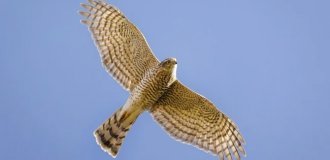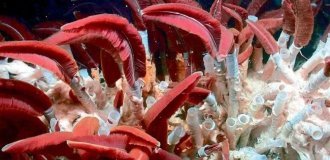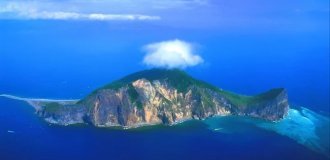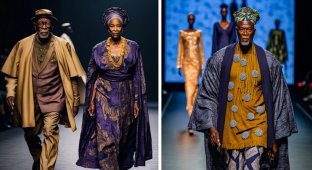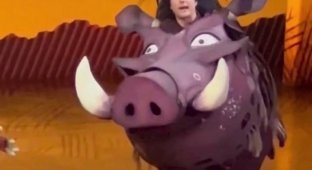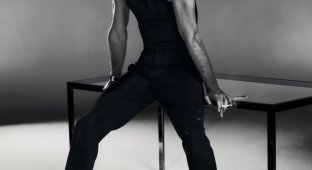Science-fiction spy, female-male - the double life of James Tiptree Jr. (21 photos)
On May 19, 1987, an elderly woman entered the bedroom where her husband lay paralyzed and blind. In her hand she was holding an Army Colt .38 caliber. She killed the old man with two shots to the chest. Then she called her stepson and said that she had shot his father. Then she lay down next to her husband, taking his hand, put the gun to her temple and pulled the trigger a third time. Thus ended the real life of James Tiptree Jr. 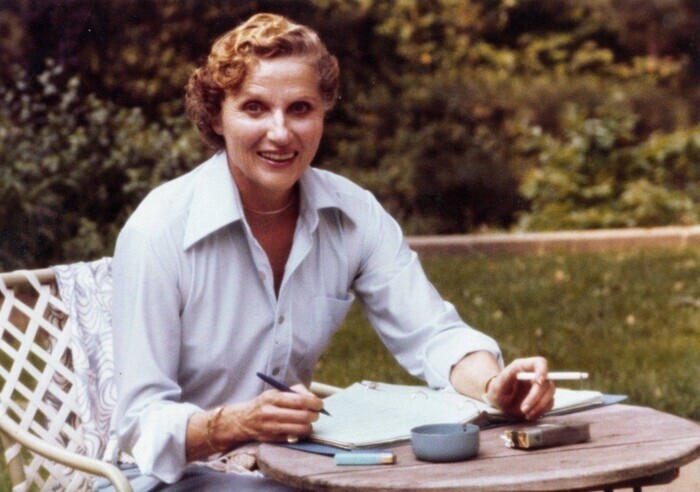
If Alice had been born 20 years earlier, she would probably have become a famous suffragette. But she was either lucky, or, on the contrary, unlucky to be born later - in 1915, when America was already overgrown with skyscrapers, there was a war in distant Europe, and the famous Chicago hunter and explorer Herbert Bradley agreed with the University of Chicago about another expedition to distant countries. He was Alice's father - and no Wonderland could compare with the one in which the girl lived.
She was a late child. Her mother, Mary Sheldon, was already 37 when she gave birth to her daughter. But not because it didn’t work out before. There was simply no time for it. Mary wrote non-fiction adventure books and, one might say, became famous for her novel “The Fortieth Door” about the life of women in Ancient Egypt (in 1924 the novel was filmed; but not a single copy has survived to this day). Herbert was an ideal husband for Mary - a naturalist, an avid hunter, a wealthy lawyer and a handsome man. Alice became their only daughter: spoiled, brave and inquisitive. At the age of 6 she was introduced to Africa. 
1921, Central Africa. 6-year-old Alice poses against the backdrop of warriors from one of the Kikuyu villages
Alice in Jungleland
In 1921, the Sheldons went on an expedition to Central Africa. The leader was Carl Ackley of the American Museum of Natural History, and the main goal was to capture mountain gorillas and other primates for stuffed animals and to add to the museum's exhibits. The consummate hunter Sheldon took an active part in the work. More than 200 porters hauled tents, boxes of food and equipment, weapons, portable showers, medical supplies, glass photographic plates and a huge amount of evening wear, used only once or twice at receptions in honor of departure and return. On the expedition, Mary Sheldon personally shot a lion and posed next to it. She was a completely fearless and somewhat reckless woman - her daughter became the same over time. 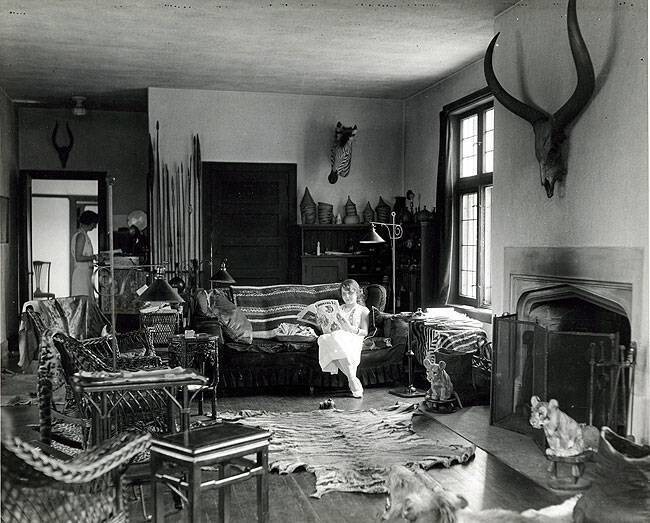
Alice in the so-called “African Room” of her home on Hyde Park Boulevard in Chicago
Upon her return, Mary Sheldon published a book for adults, On the Way of the Gorillas, and a children's duology, Alice in Jungleland and Alice in Elephantland; the books told about the adventures of their daughter on the dark continent. Alice attended the presentation of the book, they wrote about it in the newspapers. Three years later, the girl went on the second expedition as a full participant, with her own gun, a gift from her father. However, the book “Alice in the Jungle Country” was published in 1927, when the girl was already 12 years old, and Alice perfectly understood that her popularity was just a reflection of her mother’s glory. And she needed her own glory. 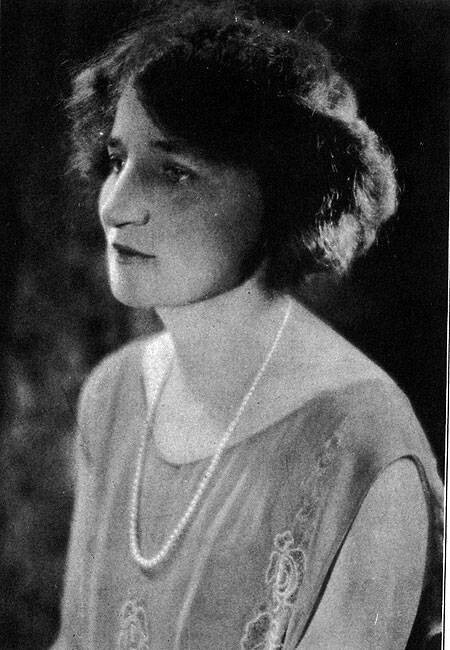
Mary Hastings Bradley and her book "Alice in Jungleland" 
Mary raised the girl to be smart, determined, capable of acting independently, without relying on anyone. This had both positive and negative sides. During ordinary teenage depression, Alice, without hesitation, tried to cut her wrists - it didn’t work. Then, contrary to her mother's wishes, the girl entered Sarah Lawrence College of Art in New York. And at Christmas 1934, Alice met a young man named William Davey - handsome, dark-haired, in a good suit; he walked her home. Three days later, she and her boyfriend went to a party and again met Bill there, with whom she danced all evening. On the same day he proposed to her. The guy was forgotten, and on December 29, Alice and Bill got married. The mother did not say anything - she understood that she herself had instilled in her daughter exactly this line of behavior. Decide - do, nothing extra. 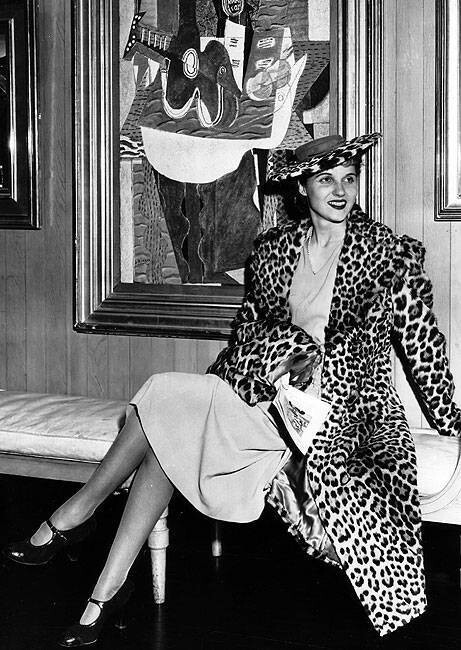
Alice Sheldon
When Alice found out that she was pregnant, she immediatelySo, without asking anyone’s opinion, she went to the hospital and had an abortion because she didn’t want children. Providence heard her prayers - the operation was unsuccessful, and the girl remained infertile for the rest of her life. Well, at that moment it suited her. William also did not have an angelic character. A representative of bohemia - a poet and the son of an artist, outside connections seemed natural to him; he cheated on Alice left and right (however, she was not known for fidelity either), went to brothels and abused bourbon. Their marriage managed to last for 6.5 years. 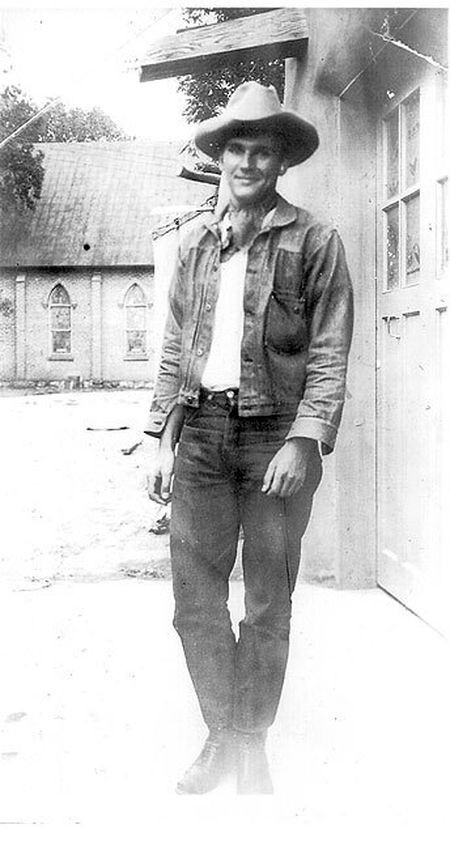
William Davey
In 1941 they divorced. Alice really wanted to go to war, and not as a nurse or home front worker. She wanted to go into battle and kill.
Alice Sheldon's War
Alice found a compromise between the gender intolerance of the US Army and her desire to fight for the country. In 1942, she showed up at a Chicago recruiting office wearing a fox collar and three-inch stilettos and asked to enlist in the Air Force. For any position. “What can you do?” - they asked her. “Draw,” she replied. 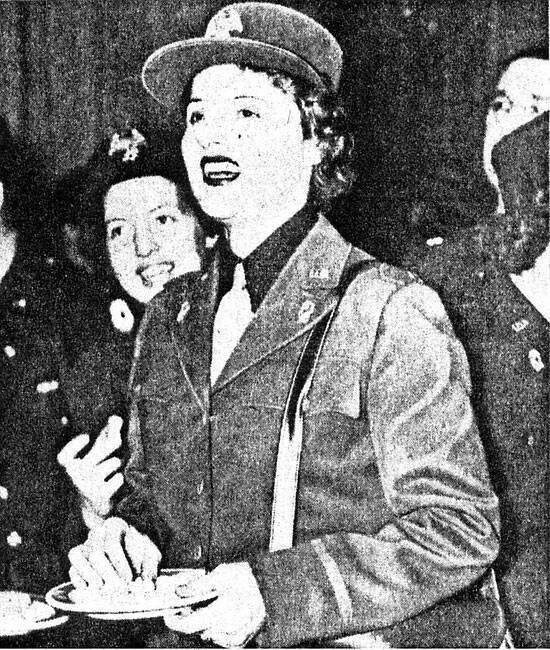
Alice Sheldon had just received an appointment to the active army (1943)
Before the war, Alice worked as a graphic artist, illustrator, and occasional art critic, usually for the Chicago Sun. William Davey wanted his wife to be an artist, and in every possible way encouraged her to paint. Alice was unlikely to become the next Berthe Morisot or Helen Allingham, but she undoubtedly had a gift, and Davy recognized it. Her works appeared several times at pre-war exhibitions, including very prestigious ones. With the money from the first of the paintings sold, Alice, while still married, bought herself a gun.
It was difficult for a woman to join the army back then. The only option was the Women's Army Auxiliary Corps, formed in May 1942 on the initiative of Edith Rogers, one of the first women in the US Congress. Alice was trained and received a typical rear position - drawing Christmas cards for soldiers fighting overseas. But Alice didn't like it. She took the initiative, began looking for a promotion (at the same time seducing - according to her own stories - about two dozen officers) and eventually received the rank of lieutenant. At the same time, she was assigned to the foreign intelligence photographic service. Alice could not be a pilot or aircraft mechanic, but she could work in the Pentagon and do analytics, studying aerial photographs of German positions. 
Famous cover photo by James Tiptree. Alice was photographed by her future husband Huntington Sheldon in 1945. The blouse and jacket are actually army uniforms
Then she received another promotion, joining an elite photographic reconnaissance unit working not with Japanese-occupied China, but with Germany. Alice was the only woman in the entire department and one of the Intelligence Agency's first photo analysts. She soon rose to the rank of major - at that time this was the highest officer rank available to ladies. After her promotion, Alice was transferred to more significant intelligence work as an undercover agent and assigned to Paris. There she met the American Huntington Denton Sheldon, nicknamed Ting.
Ting headed the “German group” of photo reconnaissance and was a military man to the core. Straight, strong, just over forty, after two divorces. At first he did not want to accept a woman into his team, but Alice challenged him to a chess match. And she won, which earned him his respect.
They got married immediately after the war, in 1946, as soon as circumstances permitted. However, this did not change anything for them. It's just that two intelligence service agents became husband and wife - but remained two agents, because there are no former agents.
Alisa served from 1952 to 1956 - first in the photographic intelligence department, then in counterintelligence, basically in ordinary positions. But Ting rose to a very significant post - from 1951 to 1961 he was director of current intelligence. In fact, this was the second position in the CIA after Allen Dulles. 
Another famous “book” photograph, often perceived as a “writer at work”
However, the couple was not happy. They worked extremely hard, at night. Alice became addicted to dextroamphetamine, a recreational drug that can become severely addictive over time. Alice loved her husband, but later admitted that they had almost no sex: Ting would appear at home in such a state that he could no longer do anything. However, she hadother Pentagon officers. Ting didn't mind.
Birth of Tiptree 
The same jam from the label of which the Tiptree pseudonym was written off
Alice Sheldon's ebullient energy haunted her even after leaving the CIA. In 1957, when she was already over forty, she entered the American University in Washington. After studying there for 10 years, Alice received a doctorate in experimental psychology.
But she wanted to do something besides study. Literature became such an activity. And Alice began to write, and took up a genre that was then ruled exclusively by men - science fiction. She took the name of a jam produced by Wilkin & Sons Ltd as a pseudonym.
She just wanted to try. Moreover, it was not the past that prevented her from revealing her real name to the world. Alice wanted to put on a mask, hide behind it, become a different person.
In the fall of 1967, James Tiptree Jr. sent the first 4 stories to the largest science fiction anthologies in the English-speaking world.
Thus began the main life of Alice Bradley Sheldon. 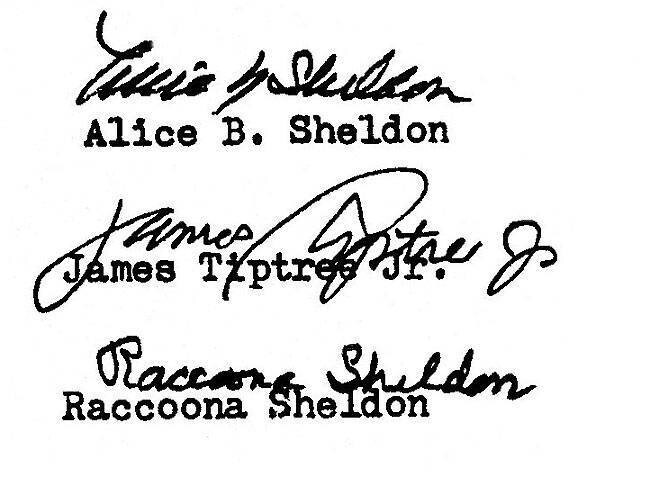
For Alice Sheldon, James Tiptree and Raccoon Sheldon, the writer had three completely different handwritings
The Talented Mr. Tiptree
At the end of 1967, the editor of Analog Science Fiction magazine, the great and terrible John Campbell, received a story from an unknown author who introduced himself in a letter as James Tiptree Jr. There was a lot of turnover, but Campbell liked the story and accepted it for publication. This was already the second story from Tiptree - Campbell did not take the first, considering the hero too pretentious and picturesque. The rejected story was published in If by Fred Paul that same year. 
1977 The first photograph of Alice Sheldon to become public after the "exposure" of James Tiptree Jr.
The story that Campbell liked was called “The Birth of a Salesman” and became the author’s first publication. Oddly enough, Tiptree didn't say anything about himself; in correspondence, he asked to be called in a friendly manner “Tip”, but did not mention his place of residence, age, or occupation. However, this suited the magazines - they needed the text first of all.
The editors liked the new author's unusual approach. Tiptree's stories raised issues that were rarely encountered in the works of other science fiction writers. Tiptree appealed to politics, espionage, paranoia, and delusions of persecution. His stories seemed alarmingly unpleasant and therefore dragged on. If the driving energy of many Golden Age authors was light and humor, then Tiptree - in contrast to others - drew inspiration from darkness. Many tried to imagine the author based on his prose. In the preface to Tiptree's second collection, published in 1975, publisher Robert Silverberg (Harry Garrison had published the first two years earlier) attempted to paint a portrait of a writer he had never met.
Some people believe that James Tiptree Jr. is a woman, but I think this opinion is absurd, since his style of writing is undoubtedly masculine. I don't think Jane Austen's stories could have been written by a man's hand, any more than Ernest Hemingway's novellas could have been written by a woman's hand. For this reason, I am confident that James Tiptree is a man.
Robert Silverberg 
Alice and Ting in 1985. Ting is eighty-two, but he is cheerful and full of energy - he is still more than a year away from his stroke
Silverberg saw Tiptree as a 50-55 year old civil servant, a lover of spending his free time in the fresh air, a kind of retired Henry Kissinger. The funny thing is that Silverberg was not wrong in any of his assumptions. Except for the floor.
Fiction by James Tiptree
Tiptree has only two major SF works to its credit. The novel “The Boundaries of Existence” (1978) is dedicated to the invasion of Earth by aliens who have telepathic abilities - this book is quite passable and did not cause much resonance. Another novel, “The Air of Paradise Will Darken” (1985), was perceived somewhat differently, in which numerous characters, with different goals, ended up on a distant planet, where the local population was subjected to genocide by earthlings. The book caused a controversial reaction - in America, readers and critics ignored it, but, for example, in Japan the novel was quite popular and even received the Seiyun Prize. Perhaps the reason is thematically, since the novel can be considered a metaphorical satire on US foreign policy. 
The same MartoThe first issue of Analog magazine, which published James Tiptree's debut story "Birth of a Salesman"
Tiptree has several stories that are sometimes listed as short novels. The story “A Fleeting Taste of Being” (1975) gives a rather exotic explanation for the cosmic expansion of humanity - it turns out that people are just sperm, whose desire for the stars is dictated by the search for an egg. The award-winning novella "Houston, Houston, Can You Hear Us?" (1976) is considered one of the first examples of space science fiction imbued with feminist ideas. No less “feminine” (and at the same time very cruel) was the story “The Only Reasonable One” (1985), another award-winning critics’ favorite.
Tiptree's stories, which formed the basis of her work, are quite diverse. The best of them are united by the author’s unconventional view of traditional SF themes, often imbued with grotesque, dark humor. In The Coming of the Chrysalis (1968), the aliens who have conquered the Earth force the “foolish natives” to worship a deity that is absurd from our point of view. But whoever has power has right... In “The Mothership” (1968), aliens are trying to destroy humanity “for immorality” - here Tiptree quite harshly ridiculed the “sacred cows” of feminism (although she herself is considered its banner). The seemingly humorous story “What should we do next?” (1971) is actually a bitter satire on progressivism or, in the Western version, the notorious “white man’s burden.” The story “The Man Who Walked Home” (1972) is a very atypical version of the development of civilization. One of Tiptree's most famous works, the short story "The Girl Who Was Plugged In" (1973), which became the basis for a television film and a musical play, is considered a precursor to cyberpunk. This is a sad story about the tragic fate of a suicidal girl whose brain was used to create a cyborg - a hypocritical and deceitful human society obsessed with consumption is shown in this story from the most unsightly side. The story “A Simple Solution” (1977) echoes the famous novel by Simak “Almost like people” - the aliens were able to take over the Earth, simply buying it in parts from greedy people. Another bitter and dark story is the story “Yankee Doodle” (1987), which shows how valiant American soldiers are molded into bloody murderers.
It’s no wonder that Tiptree’s atypical works have collected a heap of various awards—in total, the writer has about forty awards and nominations.
Anonymous success
All that was known about James Tiptree was the address from which the letters came. This address was actively used - publishers, editors, masters of the genre and simply fans wrote to James. And Tiptree diligently answered everyone, regularly revealing details that increasingly confirmed that the mysterious writer was a man. Service in aviation and military intelligence, research expeditions to Africa - could such facts be part of a woman’s biography? Hardly. 
James Tiptree Jr.'s first solo book, 10,000 Light Years from Home, with an introduction by Harry Garrison (1973)
Both Tiptree's collections, Ten Thousand Light Years from Home and Warm Worlds and Everything Else, were well received by readers. By 1976, James had developed his own fan base. In 1973, Tiptree received the prestigious Nebula Award, which was mailed to him. It was followed by "Hugo", then a second, then another "Nebula" and "Jupiter".
In 1974, Tiptree took advantage of his popularity to “promote” the work of his friend Raccoon Sheldon into thick magazines - a total of five stories were published under this name. James described Raccoon as a country schoolteacher and big fan of his who tried to write "like Tiptree" and did a good job. However, the publishers did not hide the fact that they guessed that the new writer was illusory. It was clearly Tiptree under a different name.
That's how it would continue. Tiptree would be writing his wonderful stories, receiving bonuses in the mail and pretending to be a provincial teacher, if not for one tragedy. On October 25, 1976, a certain Mary Hastings Bradley, a famous former writer and author of adventure novels, died in Chicago, and soon in several letters to various people, James Tiptree Jr. mentioned that his mother had died, and his mother was “also a writer.” Fans quickly scoured Chicago newspapers for obituaries and linked A and B. Two weeks later, fan and fanzine publisher Jeff Smith wrote Tiptree a letter suggesting that the writer's real name was Alice Sheldon. Smith did not expect an answer, but it came anyway. 
Biography of AliceSheldon by Julia Philips was published in 2006. The book contained many rare family photographs. 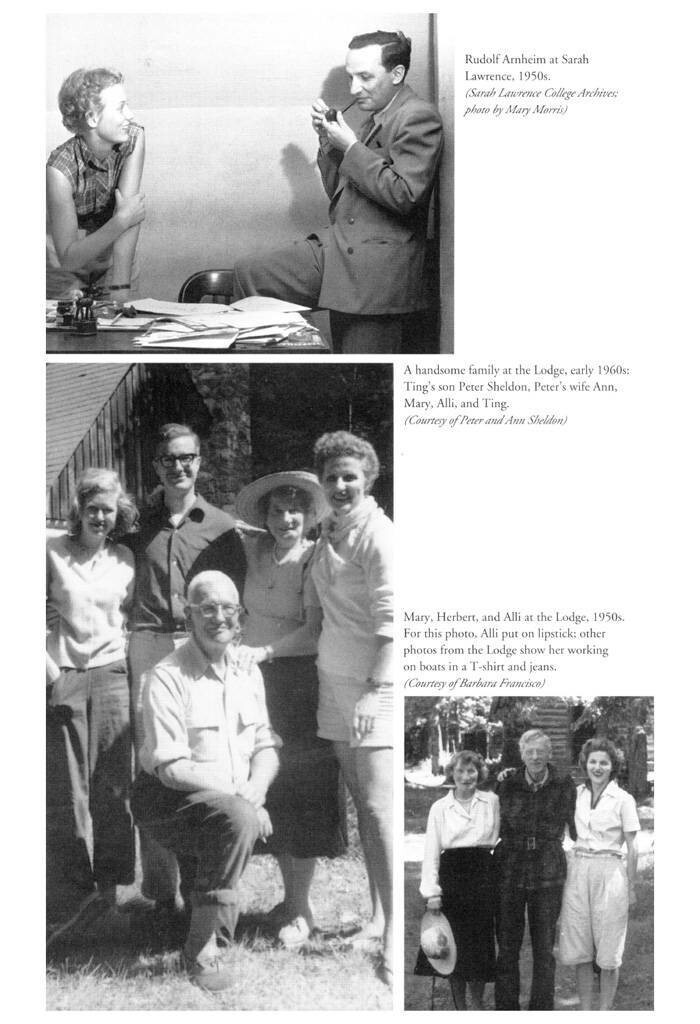
James Tiptree
Until recently, one story by James Tiptree Jr., “A Fleeting Taste of Being” (1975), was officially translated, as well as nine stories published in various anthologies and periodicals. 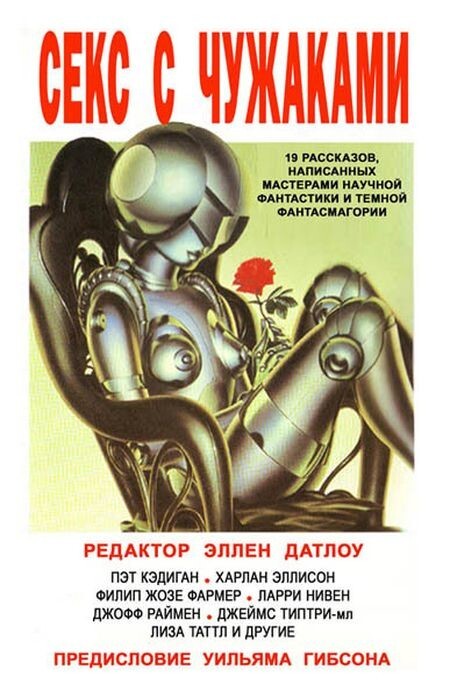
In the 2000s, fantasy fans released three limited-edition souvenir collections by James Tiptree Jr., including both officially translated stories and amateur translations, as well as both of her novels. And only at the beginning of 2018, Tiptree’s collection of short stories and novellas “Happiness is a Warm Starship” was finally officially released with a circulation of 4,000 copies.
Fall of Tiptree
Ten years of anonymity. Ten years under the mask. Ten years under a false name - a man's name, more significant in the eyes of the public than a woman's. James Tiptree Jr. got tired and responded to his whistleblower's letter: Yes, my name is Alice Sheldon. 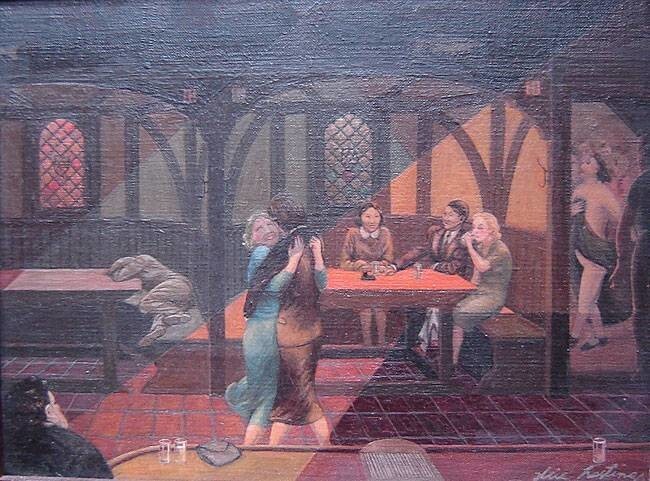
Painting by Alice Sheldon: "The Gai Club" (1941), which Alice entered into competition to be included in the prestigious All-American exhibition at Washington's Corcoran Gallery
She was 61 years old and—long since retired from service—suffered from cyclothymia, an unpleasant psychological disorder that causes a person to constantly oscillate between two extremes, depression and euphoria. She had binges, she was on amphetamines and oxymorphone, and there was nothing but darkness ahead of her. The problem was that Alice Sheldon did not know how to write books: she was not a writer, she did not know how to come up with plots or fill characters with life. The writer was a man named James Tiptree Jr., and when she decided to kill him by revealing her incognito identity, everything in her died.
Her entire marriage turned out to be literally a marriage with intelligence. When Alice had already quit, Ting continued to disappear from work for weeks, and precisely at work. She would have forgiven him for another woman, bars and friends, white lies, but she could not forgive straightforward honesty and undiminished debt to the country. 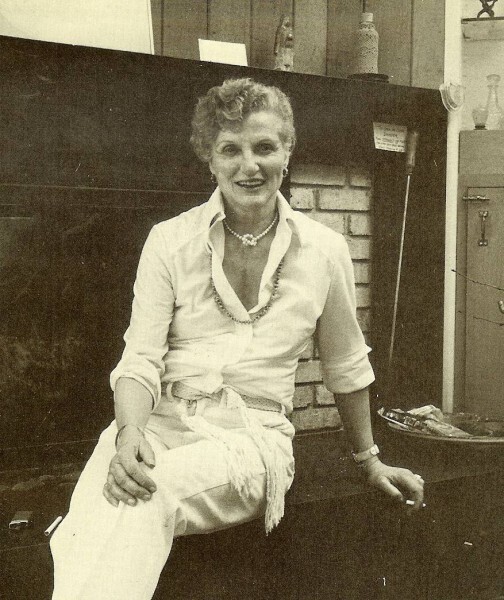
1985 Alice's latest photo shoot by Los Angeles photographer Patti Parrett
Of course, she tried to write further. In the 1980s, another dozen and a half stories were published, plus after the exposure, Alice wrote two novels, failures from both a literary and commercial point of view. The only story that was more or less successful was “The Only Thing That Must Be Done,” written in 1985; it received the “Locus” and several other genre awards. For the last ten years of her life, Alice wrote things that could not be called even a pale shadow of Tiptree's work. Plaintive, poor in terms of images and language, filled with absolute hopelessness. Under the mask of Tiptree, Alice invented heroes, under her own name she described herself.
Her health was rapidly deteriorating. She suffered a heart attack, and the disrupted biochemical balance led to numerous problems with the skin and digestive system. She was constantly in a state of nervous breakdown. Ting, being twelve years older than Alice, suffered a stroke, almost lost his sight, and was partially paralyzed. He at least had children from his first marriage, but Alice had no one in her life except this feeble old man. She tried in vain to discern in him the brave officer whom she had married forty years ago.
Shortly before May 19, 1987, Ting, knowing about his wife’s psychological problems, asked his son to take all hunting weapons from the house, and personally threw his 38-caliber Colt into the nearest pond. On the morning of May 19, Alice had another nervous breakdown, but she convinced the police who arrived on call that everything was fine and it would pass. When they left, she took another Colt, hidden from her husband, and headed to the bedroom, where the life of James Tiptree Jr., one of the brightest and most controversial American science fiction writers, ended...


